
RECEPTION AND STORING OF RAW MATERIALS AND COMPONENTS
Components and raw materials come in the company from selected Italian suppliers everyday. After several tests for checking the quality, the brass, bought from certified suppliers in the form of pat or bar, is ready to be casted, forged or machined inside our production plant where 100 % of mechanical processes are performed. After a strict quality control, the components are catalogued, placed in FIMA containing unity and stored inside the plant on the basis of their category. From this moment every movement of materials is tracked till the complete production of FIMA Carlo Frattini product.
TURINING
Moulded and casted items
In the machinery department all casted and forged bodies are machined, drilled and threaded. All the passages of the production are automated with optical recognition robots and continuously controlled by the integrated informatics systems. Any residue from the processing is collected with a phased vacuum system that immediately collects all the shavings of brass with a reduced consumption of energy. After several washing treatments, the shavings are collected in dedicated silos and are ready for being transformed again in new brass bricks or bars in full respect of the environment according to the #green philosophy of the company.
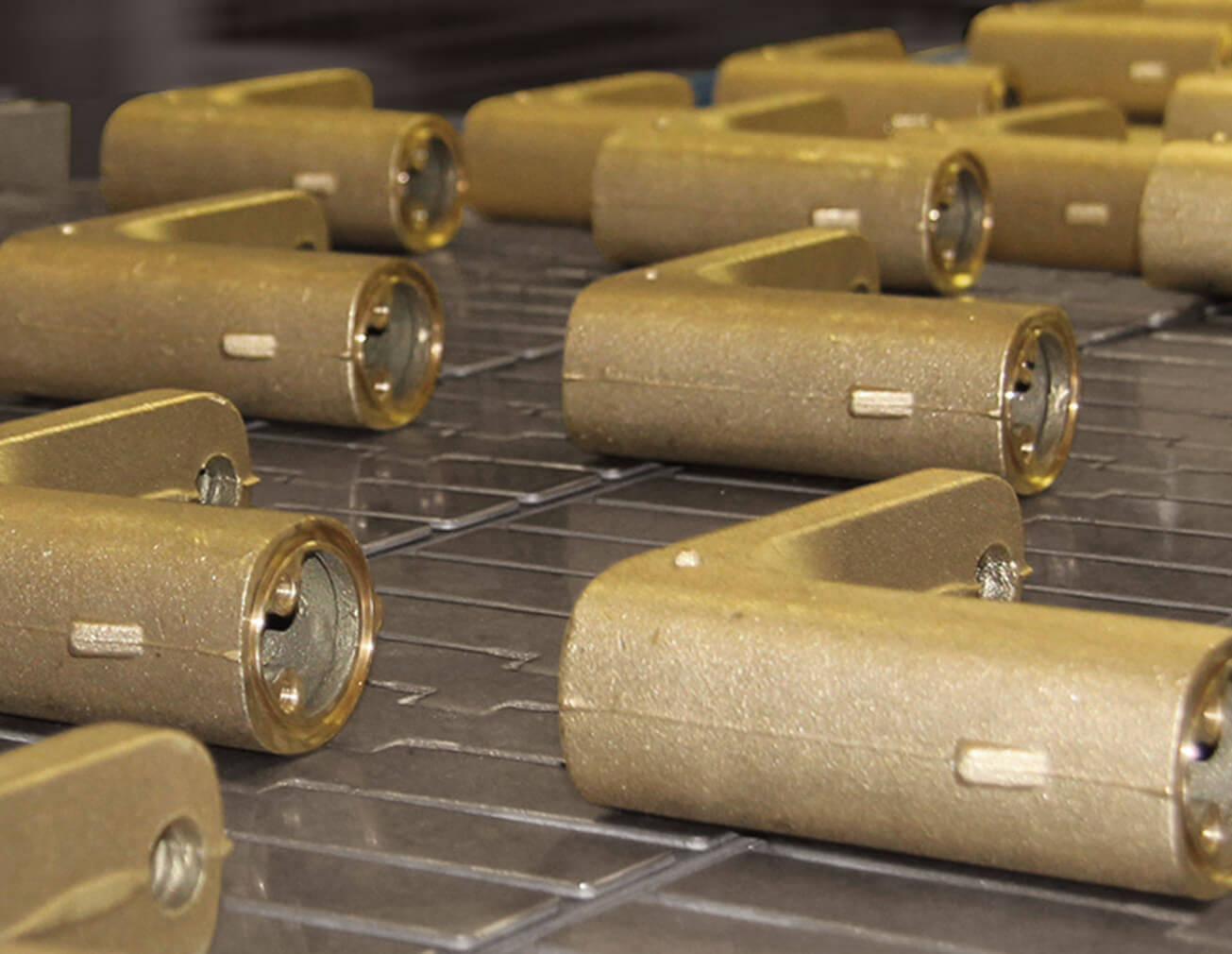
TURINING
Brass rod with numerical-control lathe
The CNC department is equipped with 8 CNC multi axis lathes able to machine different sections of brass bars in an extremely precise way and with high efficiency. All brass shavings are collected also in this department with the innovative vacuum system and are divided automatically on the basis of the typology of brass. In this department we produce all brass components that are part of FIMA Carlo Frattini products in order to guarantee a complete control of the production and a total reduction of the wastes by reusing the 100 % of the production scraps.
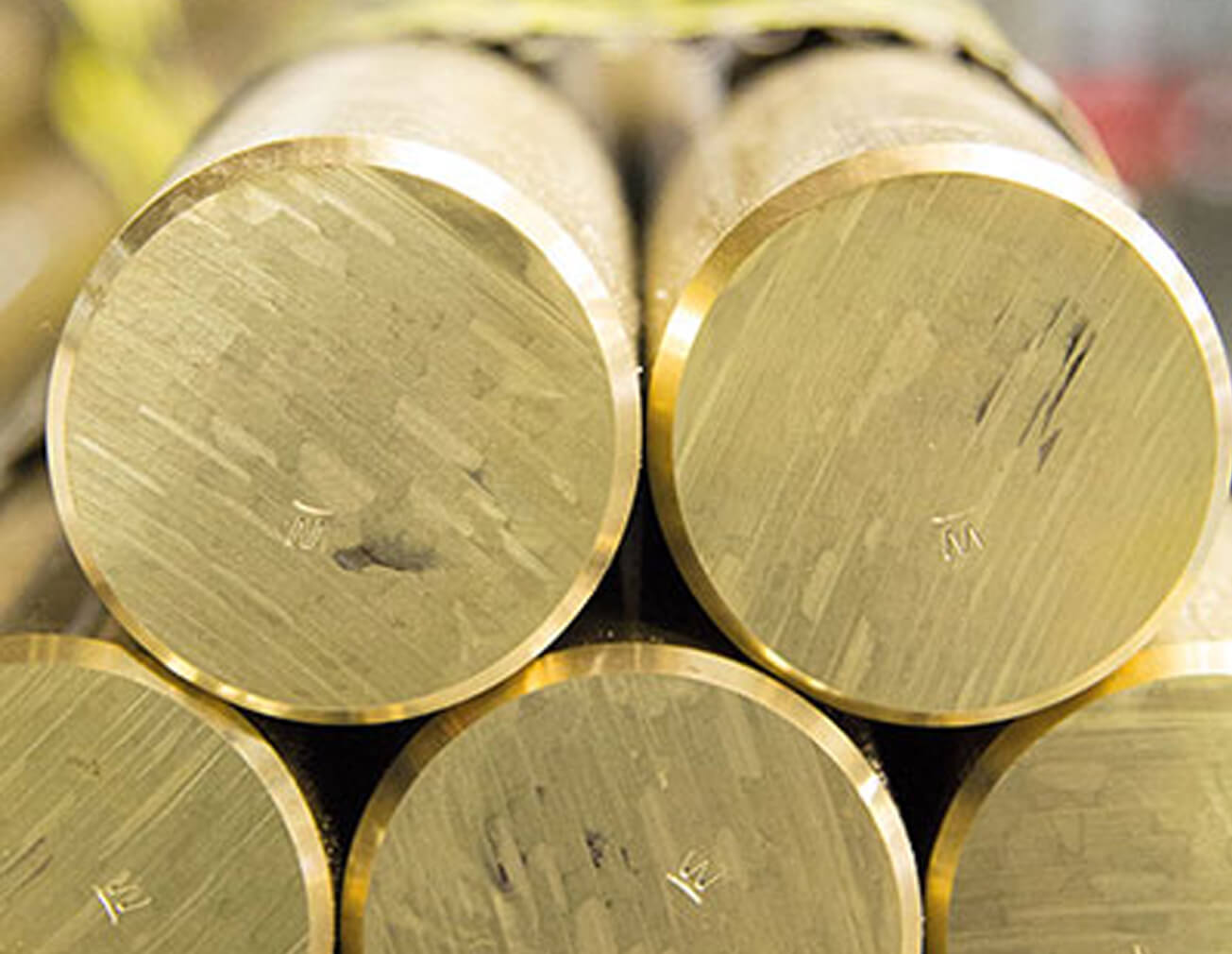
POLISHING
Metal polishing systems
In the polishing department, automatic machineries grind, buss and polish every single piece in order to get the best brilliant and shiny surface. An efficient integrated aspiration system provides a clean environment without durst and the collection of all brass powders ensures a total recycle of materials with no wastes. All products with a particular #design are entrusted and one by one manually processed by expert operators in order to guarantee an incomparable quality, brilliance and details.
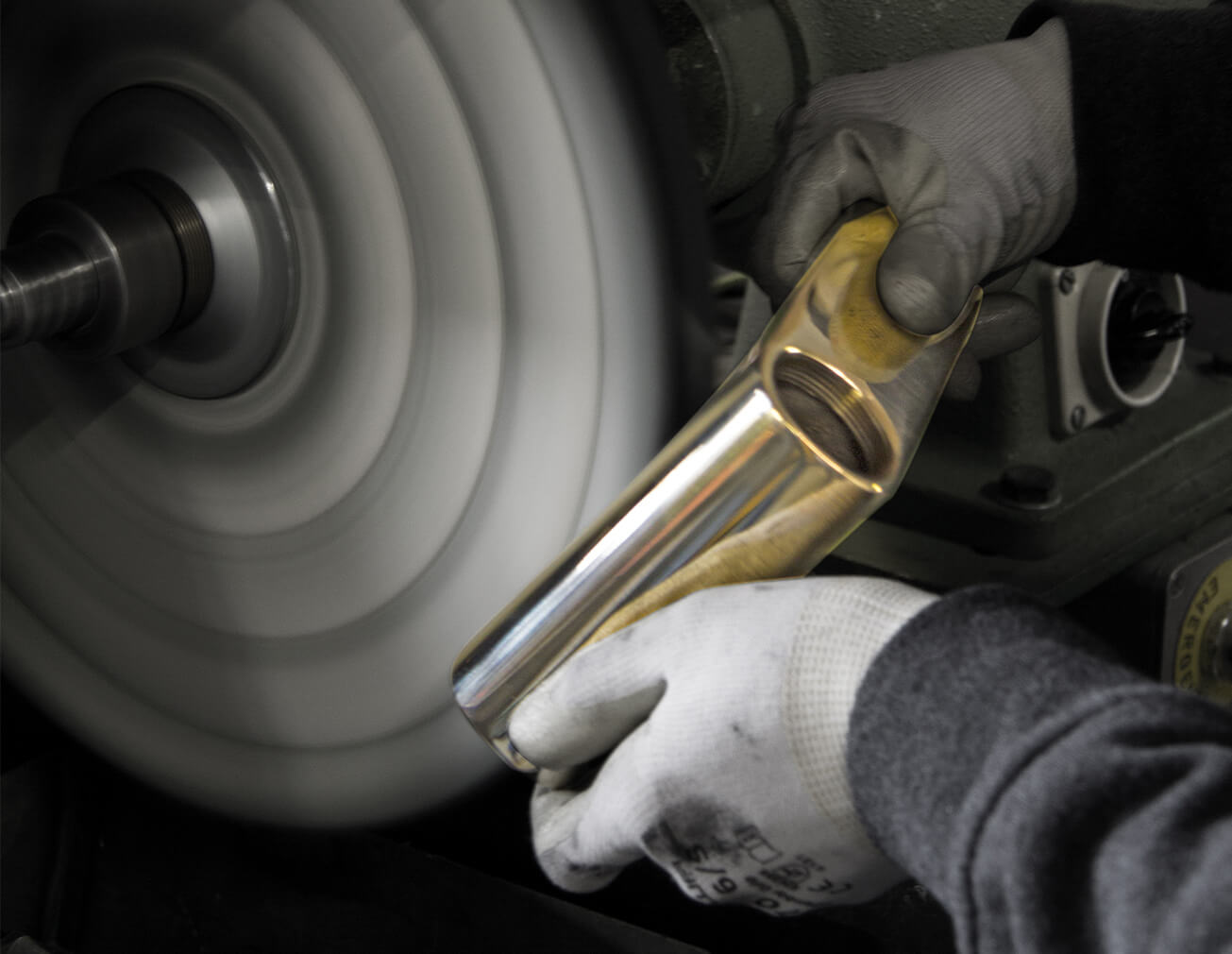
ELECTROPLATING
Automated galvanic system
The galvanic department is equipped with an automated galvanic system composed by 44 different baths and able to produce all the unique chrome, black chrome, nickel and gold finishes of FIMA Carlo Frattini. The system, realized with the most innovative technologies, is totally #green thanks both to the use of trivalent chromium, completely safe for the health and the environment, and to the scrupulous ecological plans and closed cycle treatments able to clean all discharged water with some cleaning resin systems.
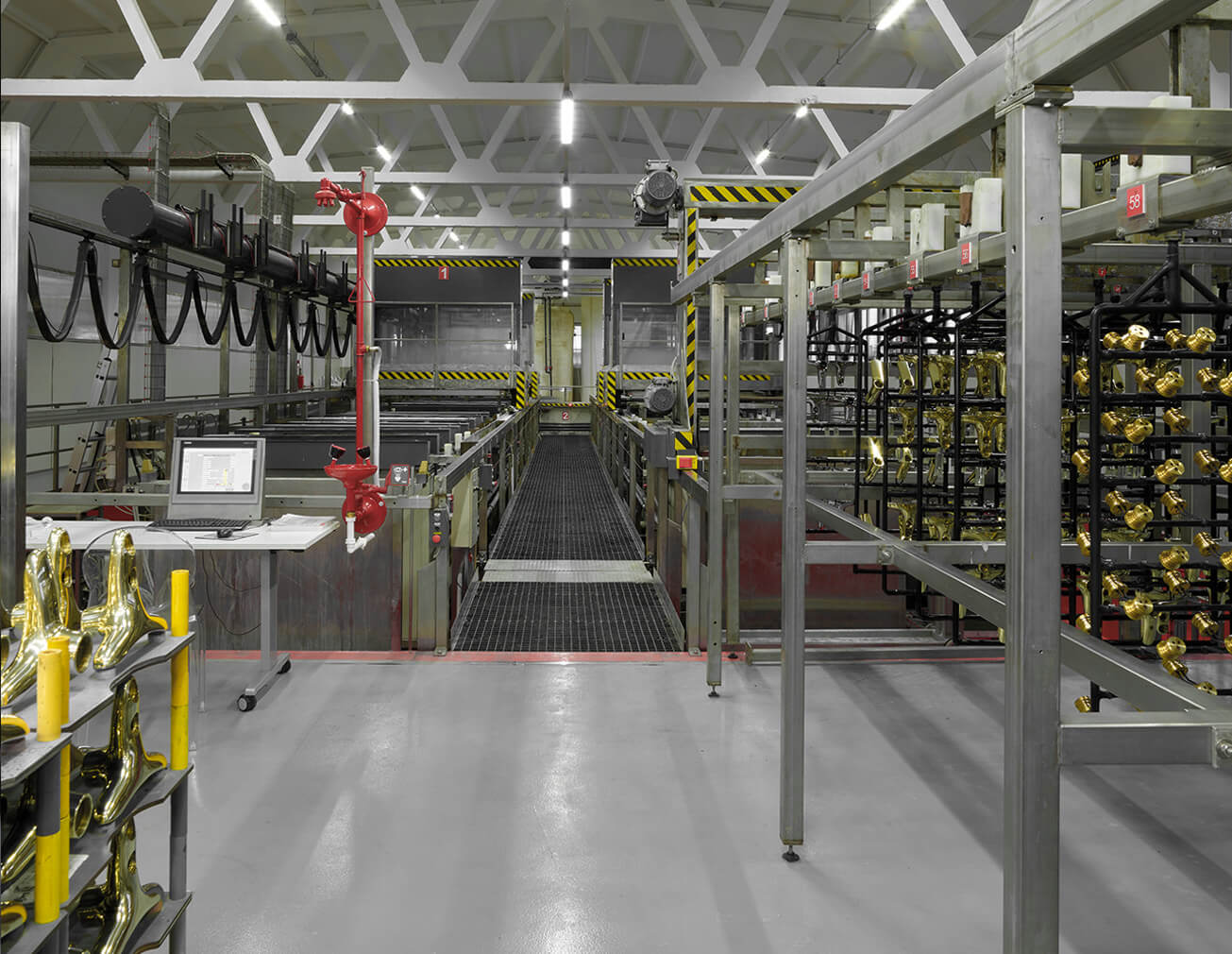
ASSEMBLY
Automatic installation
The assembly department is divided into 12 different assembling centers. The 6 automated centres are dedicated to the production of large lots. Here each product is assembled and tested one by one with a pressurized air system that allows to detect even the smallest imperfections and micro losses that could evolve into defects in the product during normal use. Each assembling centre has its own warehouse that makes it totally self-sufficient and is daily supplied on the basis of the orders and according to a logic aimed to optimize the material handling.
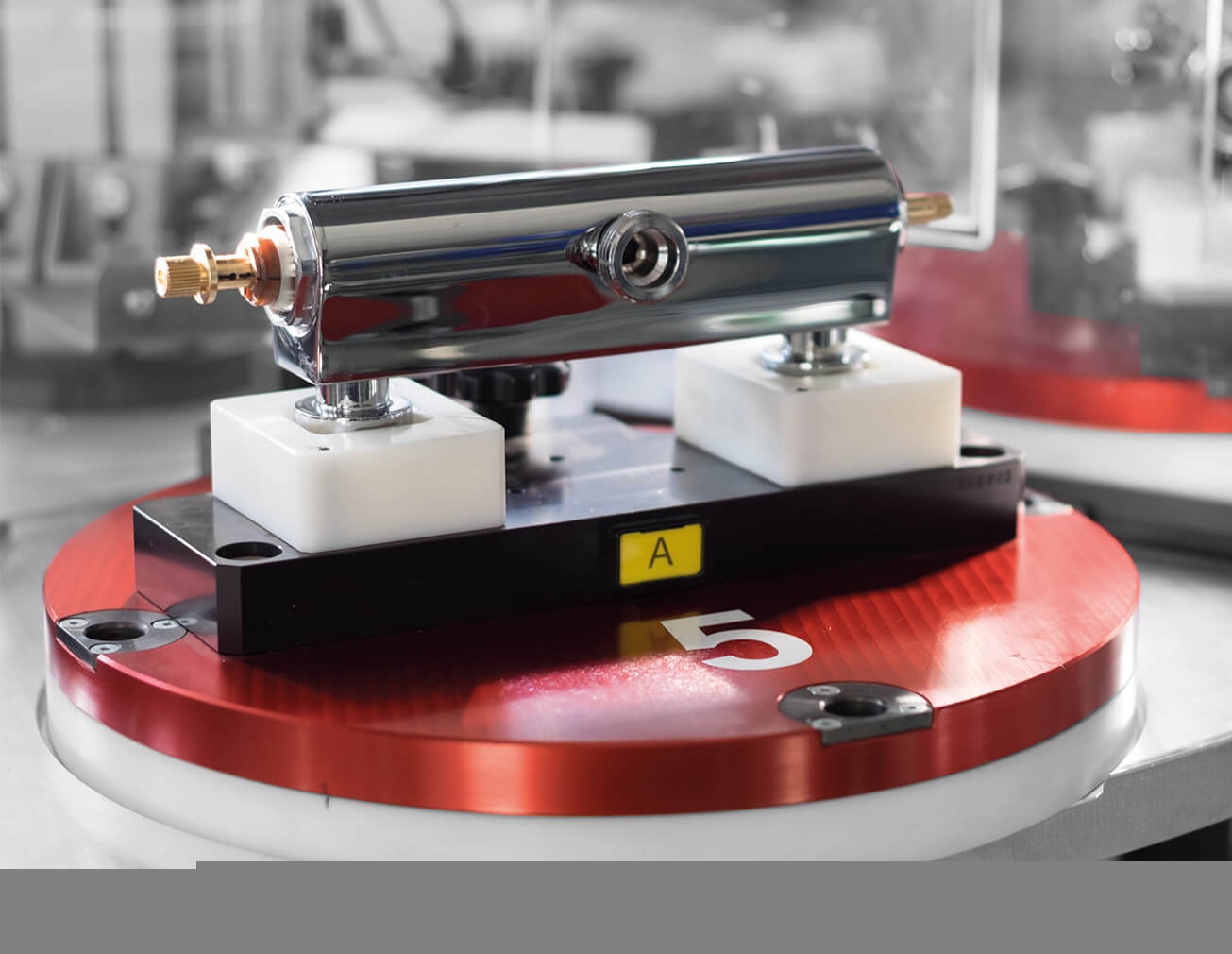
ASSEMBLY
Manual installation
The manual assembling centres are dedicated to the production of specific products made directly according to the customer’s order. Here the materials are supplied on the basis of specific orders, but each island can even assemble in only 12 hours any FIMA Carlo Frattini product thanks to the monitoring of the stocks in the assembling centre and the optimization of material handling. Products assembled and tested one by one by a qualified staff with a pressurized air system are then transferred to the transit warehouse, ready to be packaged.
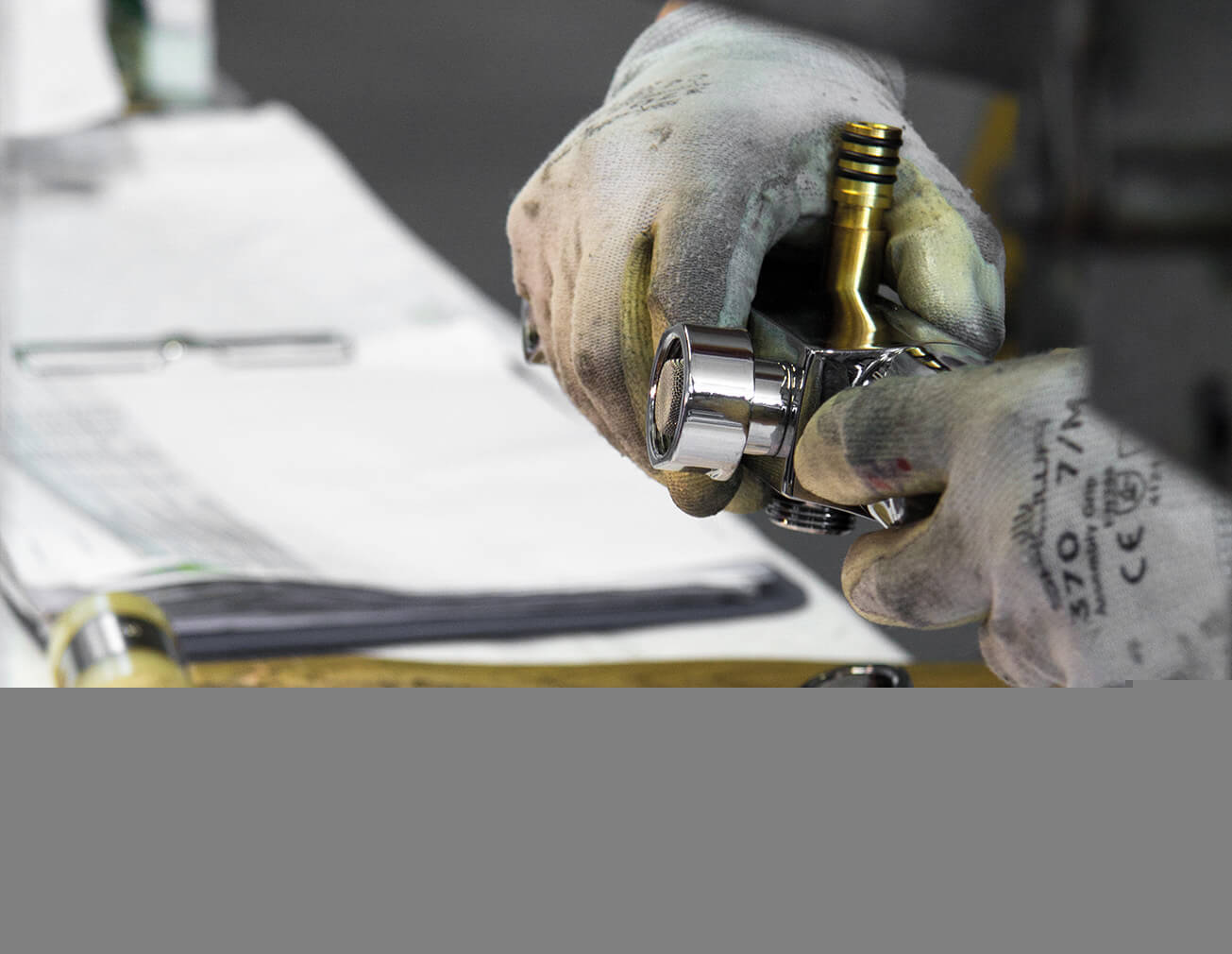
PACKAGING
The packaging department is made up of 6 different centres for a total of 12 manual packaging tables. Here, the products from the assembly centres are cleaned, subjected to a final check of the finishes and then packaged with a special bar code that allows the traceability of the production lot. Even the cardboard packaging used follows the company’s #green philosophy and are made of 100% recycled materials which are in turn recyclable, minimizing waste and enhancing the reuse of environmental resources. The attachment of the guarantee seal on each package guarantees the 100% made in Italy.
DISPATCH
The shipping department is composed of 4 automated packaging lines where the operators can simultaneously carry multiple shipping orders using electronic pads connected to the central system. The material is picked up directly from the finished product warehouse which is daily supplied on the basis of sale trends and according to the inventory optimization. Also in this department, the use of recycled materials is prerogative and each single packet is sealed through the unmistakable red strap to ensure the integrity of the content to the end customer.
FIMA RESEARCH CENTRE
The Research and Development Centre of the company is the place where the ideas from the designers or from the sale demands and the market come alive. A team of experienced designers develops day-to-day solutions with state-of-the-art equipment. Each product processed before being put into production is realized in 3D mechanical prototyping, tested on water on special simulation benches to understand the criticality of its operation and then reworked. Only once passed severe #quality tests, the product is engineered, put into production and distributed through FIMA Carlo Frattini dealers.
